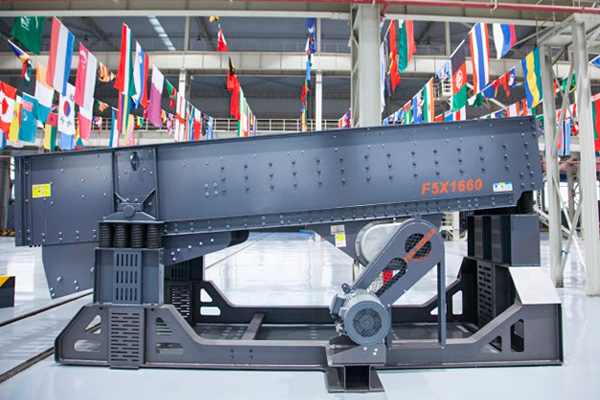In the realm of ore mining, a vibrating feeder plays a crucial role in the efficient handling and processing of mined materials. This equipment is essential for managing the flow of ore from the storage or extraction point to the subsequent processing stages, such as crushers or screens. Here’s a comprehensive overview of its functionality, benefits, and key considerations.
Functionality
A vibrating feeder is designed to transfer materials in a controlled and consistent manner. It operates on the principle of vibration, which is generated by a set of vibratory motors or electromagnetic exciters. This vibration creates a smooth and continuous flow of ore, preventing blockages and ensuring that the material is evenly distributed. The feeder typically consists of a trough or pan mounted on springs or rubber isolators to absorb vibrations and minimize noise.

The primary function of the vibrating feeder is to regulate the feed rate of the material. By adjusting the amplitude and frequency of the vibrations, operators can control the speed and quantity of ore being fed into the subsequent processing equipment. This is crucial for optimizing the performance of crushers and screens, as it ensures they receive a steady and uniform supply of material.
Benefits
- Uniform Feeding: One of the main advantages of a vibrating feeder is its ability to provide a consistent flow of material. This uniform feeding prevents overloading and underloading of crushers, which can lead to inefficiencies and increased wear and tear on equipment.
- Reduced Maintenance: Vibrating feeders are known for their durability and low maintenance requirements. The design typically involves minimal moving parts, which reduces the likelihood of mechanical failures and extends the lifespan of the equipment.
- Versatility: Vibrating feeders can handle a wide range of materials, including granular, powdery, and even abrasive ores. This versatility makes them suitable for various stages of ore processing, from primary extraction to fine grinding.
- Adjustable Feed Rates: The ability to adjust the feed rate allows for better control over the processing operations. This flexibility helps in optimizing the performance of downstream equipment and achieving desired processing outcomes.
- Minimized Blockages: The vibrating motion helps to prevent material from clogging or bridging in the feeder. This ensures a continuous and smooth operation, reducing downtime and increasing overall efficiency.
Key Considerations
- Material Characteristics: The design of the vibrating feeder should be tailored to the specific characteristics of the ore being processed. Factors such as particle size, moisture content, and abrasiveness can influence the performance and durability of the feeder.
- Feeder Size and Capacity: Selecting the appropriate size and capacity of the feeder is critical for ensuring that it meets the demands of the mining operation. A feeder that is too small may lead to overloading of downstream equipment, while one that is too large may result in unnecessary costs and space usage.
- Vibration Control: Proper control of the vibration parameters is essential for optimizing the performance of the feeder. This includes adjusting the amplitude and frequency to match the specific requirements of the ore and processing equipment.
- Installation and Maintenance: Proper installation and regular maintenance are vital for ensuring the longevity and efficiency of the vibrating feeder. Regular inspections and timely repairs can prevent issues and maintain optimal performance.
A vibrating feeders are a vital component in ore mining, offering precise control over material handling, increased efficiency, and reduced operational costs. Their durability, versatility, and ability to handle a wide range of materials make them an invaluable asset in the mining industry. By ensuring a steady and controlled flow of ore, vibrating feeders contribute to the overall efficiency and productivity of mining operations.

